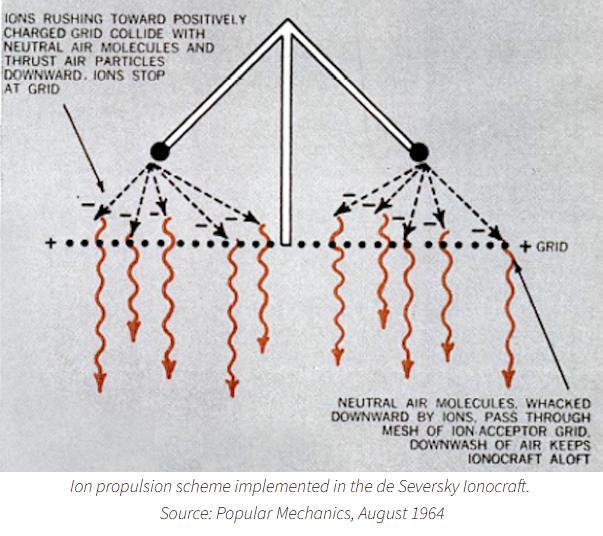Third in This Levitation Series
Nature's way to provide efficient motion for transportation

Photo credit: pexels.com
Finding a way to use nature’s motion is essential for efficient transportation. New methodologies require changing traditional scientific perspectives. The leaders in scientific breakthroughs surpass tradition. New modes of transportation technology require vision and innovation.
In the argument of fuel requirement to levitate a vehicle, the argument is erroneous. Similarly; many questions require significant depth to answer. Such a question is: what makes a magnet move? The only legitimate answer to that question is: molecular combinations of electron structure. Using the phrase: ‘a magnet moves because it has opposing poles’ is deferring an answer to the question; in the same way that saying fuel is required to levitate a vehicle.
Being able to use Earth’s existing energy, can provide the mechanism to enhance mobility. Presumably, this is what Viktor Grebennikov referred to, when he alluded to it being the “fuel” needed to levitate his device. This conjecture of his device was able to act upon and capture energy for its movement from Earth’s electromagnet field and the atmosphere.
With the Earth’s atmosphere of positive ions, a negatively charged device would produce an attractive action. The requirement for a significant action capable to carry the weight of a 300-pound load is what Grebennikov refers to as ‘fuel’. This positive / negative action would be minimized its weight by levitation.
What role do Cavity Structures Effect (CSEs) play to influence a transportation device for levitation? As the article points out; as a void, the CSEs would act as negative to gravity. To electricity, a void is different than a ground or a neutral. To magnetism, it would be neither negative or positive. What is the ‘fuel’ that can amplify the CSE to magnify the intensity of its negative gravitational field? A levitating device utilizing the negative charge of CSEs, calls for the compression of CSEs. This could represent the “fuel” application for a levitating device.
Amplifying the intensity of Earth’s positive ion field, or Earth’s negative magnetic field to Increase its field strength, may be irrelevant to CSEs. It stands to reason that Earth’s electrostatic field has more to do with the effectiveness of interaction with resonance in its frequency to CSEs. A CSEs field is intensified by compression. The whole point of levitation is vibration. In developing a levitating device, it doesn’t require electrostatic voltage to carry a load, as much as; it requires vibrational intensity. It’s probable that the intensity of CSEs is what produces a field advantageous to levitation. The positive ions in Earth’s atmosphere provide attraction to a negative field. Earth’s negative magnetic charge produces a negative field advantageous as repulsion for a vehicle device with a negative charge.
Each vehicle device necessitates an encapsulating field. From the article: Toroidal Fields of Dreams; it investigates these types of fields: In the philosophies of theoretical physics, these five commonalities are expanded to dimensions of existence, as an understanding of more than just five senses in our three-dimensional perception of reality understanding.
What we perceive as visually present, is far less than what is shown on an electromagnetic wave spectrum. The same is to be said for all spectrums of our perception to each of the five human sensory mechanisms.
So, to the point of the toroidal fields; these are fixed electromagnetic energy fields. This leads to a question. Are the human sensory mechanisms based on a subatomic structure which necessitates a ferrous component? This is a legitimate yes, theoretically, because the human body is carbon based. It would also allow electrogravitational composition. Are the human neuron receptors electrogravitic or electromagnetic? Again, the composition of subatomic structure could be either.
Building a device
For levitation as a state of vibration, at what level of subatomic action does this phenomenon react? The article Levitation is Vibrational Mass Accumulation, identifies levitation as a product of mass; rather than subatomic. The perception of CSEs, indicate a subatomic electrogravitic nature. This leads to the postulation that control of a levitating vehicle device requires an interaction with gravity and magnetic fields. Simply stated, this involves an interaction of both ferrous and nonferrous materials.
Where does this take us? Back to the question of how to build a levitating device. Again, it points to Viktor Grebennikov’s levitating device that uses CSE’s and Earth’s electromagnetic fields. The blogpost: More About CSE’s highlights Grebennikov’s details of its construction: The article showed that there was a combination of fans with nine ‘blades’. What’s their purpose? The way it’s described; the platform has two halves that unfold to function as one platform. With the two sections combined it’s referred to as a bonding of the distribution mechanism to a fan opening device. Or is there another interpretation to this: “This is a bonding of the distribution mechanism, which transfers effort from the “distributors” to a fan opening device. Each fan consists of nine plates. In order to make them strong, the plates are made of sheet metal. Micro-nets are stuck from the upper surface of each plate.”
It's assumed that a micro-net is the stacking of CSEs. This structure is undefined. The several articles regarding chitin and crystal polymerizations refer to this type of CSEs.
These details are a starting point to experiment with.
The transportation market
Invention and copyrights are vastly different. This statement is merely making the point that an invention is specific to a product or a device and a copyright belongs to the field of art. The similarities involved require imagination and vision in their creation. Relating invention to the building of a levitating device, the comparison is like a genre of music that doesn’t exist yet. Once a music genre is created, many people are able to copy it, and each performer can have a following. In regards to invention, Henry Ford didn’t invent the car, he mass produced them. He was a marketer. Elon Musk didn’t invent the electric car; he’s a marketing genius. Musk has discovered the marketability of the incredibly lucrative transportation industry.
Researching concepts to discover physics principles of how a levitating vehicle works, is much different than expanding a known technology into a marketing plan, hiring engineers to build a device, then sell the product to the public market.
CATTCC's purpose of discovering a methodology to manipulate gravity is much more important than the financial gain. The societal demand of technology for transportation advances has reached a pentacle. For transportation to be sustainable, it has to be efficient. Reaching this demand calls for a new scientific perspective. This leading edge of transportation research mandates something beyond accepted traditions. It requires new questions and looks for solutions that bring a fresh perspective.
This brings us to re-ask the question of how does a levitating vehicle work?
How to build a levitating vehicle
Levitation is the act of floating in air. A bumblebee hovers, with its tiny wing guiding its path. Birds aerodynamically adhere to nature's atmosphere. A falcon reaches a speed of 200 miles per hour in a dive. Human intellectual capability must surely be able to do more.
A somewhat more conventional methodology to develop a levitating device is with ions in the atmosphere.
Levitation with Earth's atmosphere and ions
What's the difference between positive and negative ions in the atmosphere? The article Ion Drives, touches questions about how ions can be used for transportation devices. There is a Florida company working with drones towards this endeavor: The Silent Ventus. Their concept to the driving mechanism is a different type of operational system methodology.
This drawing is the principle of the Ionocraft, a 1964 patent by Alexander de Seversky.

The Lyncean Group hosts articles of Alexander de Seversky’s work, electrodynamic propulsion, electro-aerodynamic aircraft, and Ionocraft lifters. Regarding the Ionocraft: When charged molecules in the air are subjected to an electric field, they are accelerated. When these charged molecules collide with neutral ones, they transfer part of their momentum, leading to air movement known as an “ionic wind.” This basic process is shown in the following diagram, which depicts a strong electric field between a discharge electrode (left) and a ground electrode (right), and the motion of negative ions toward the ground electrode where they are collected. The neutral molecules pass through the ground electrode and generate the thrust called the ionic wind.
De Seversky built a two-ounce (57 gram) model. The Lyncean Group article describes it: its ability to fly while powered from an external 90 watt power conversion system (30,000 volts at 3 mA), significantly higher than conventional aircraft and helicopters. This translated into a power-to-weight ratio of about 0.96 hp/pound.
A paper by Sanghyeon Park also describes the Ionocraft.
Conclusion
What are the similarities between the principles of an electrohydrodynamic ion-propulsion and Viktor Grebennikov’s design? They both have no moving parts. Patent designs exist for Alexander de Seversky’s Ionocraft. Written designs for Grebennikov’s levitating device are unknown.
The search for discovering a levitating device is different than the work towards a propulsion device. Alexander de Seversky’s Ionocraft required an electrically charged field. It is conjecturally found that Grebennikov’s device used CSEs to affect the molecular polarization of Earth’s atmosphere and its negative magnetic field of the ground. His device used what is already present, without the necessity to stimulate an ionic reaction from an electric field generation.



